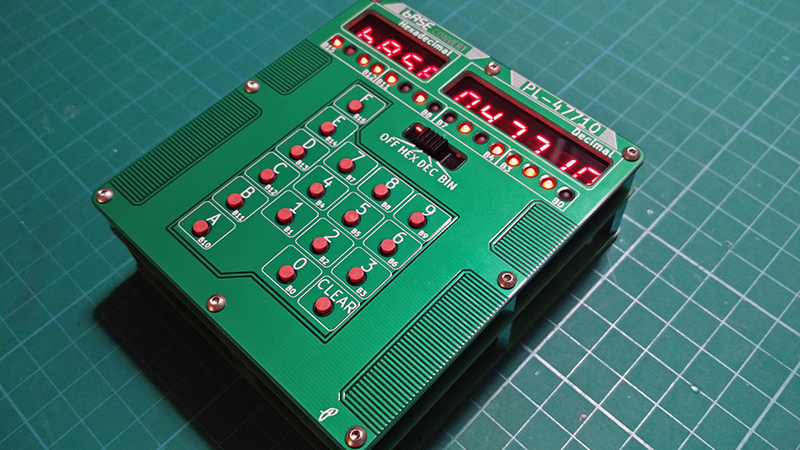Some of the greatest electronic calculators of all time, including the venerable HP-16C, included functionality to convert numbers between different bases. 3735928559 might not mean much in base 10, but convert that to hex, and you’ll offend vegetarians. If the great calculators of yore had a way to convert between number bases, that means someone must make a standalone device to do the same, right? That’s what [leumasyerrp] is doing for their entry into the Hackaday Prize, anyway.
The Base Convert project is a simple desktop calculator designed to convert between hexadecimal, decimal, and binary. To do this, there’s an 8×8 key matrix for the numbers 0 through F. There are sixteen single LEDs, four seven-segment LEDs for the hex display, and six seven-segment LEDs for the decimal display.
While this is really just a project [leumasyerrp] came up with to learn the MSP430 microcontroller, this looks like a fantastic project given it’s great use of milled PCB for a front panel, careful selection of standoff height, and everything is tucked away into a package that looks about as professional as you can expect from a device made entirely from PCBs. Of course, the Base Convert calculator works as expected, and can easily change between number bases.
Sometimes it’s not about building the hardest or most complex project, but instead simply putting the most amount of polish into a simple project. This is a project that does that well, and we’re happy to have this in the running for the Hackaday Prize.


















Using plain ol’ LEDs for the Binary display is pretty neat!
8×8 key matrix?
G’ol’ DEADBEEF never fails to offend!
I just noticed…
NO OCTAL!
(gasp!)
A deal breaker :(
Not to dismiss anyone who actually has to use octal, or that you may be using sarcasm here, but the last and only time I used it was in undergrad. Even then it was taught more or less as a historical footnote. I’ll take a less cluttered UI over a feature that I’m hardly/never going to use. Someone that needs octal is free to make their own variation, though. This is Hackaday, afterall.